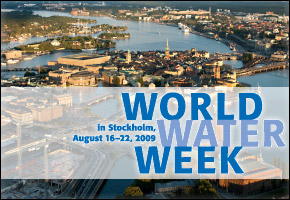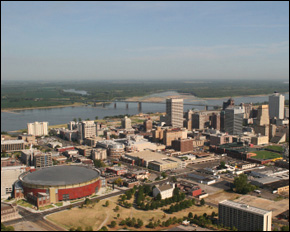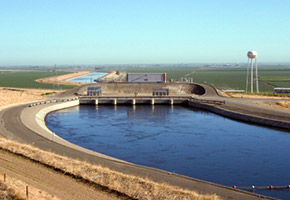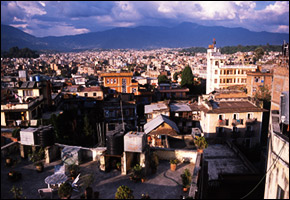Peter Gleick: An International Water Perspective; Water in Crisis

I’m spending the week at the Stockholm Water Symposium, an international meeting involving more than 2,000 people from over 130 countries. The annual Stockholm symposium is 19 years old and is one of the best international water meetings around. I love going — though I haven’t been for many years — because it helps me recharge and refocus away from the narrow and local controversies around water in the western United States to a more global perspective. This year, more than most, I have been struck by the remarkable progress in thinking about water made globally, especially compared with the slow progress made in California over the past decade.
Viewed from the outside (and perhaps from the inside), California is no longer a world leader on water. While remarkable and innovative efforts at sustainable water management are still being pursued here and there in California and the United States, these efforts are no longer either unusual or groundbreaking. And for some issues, such as improving water efficiency, developing and applying new water treatment technology, addressing water poverty, reducing the impacts of overuse and water pollution, and using smart economics, efforts outside of the U.S. are often far more advanced. In many ways, we’ve fallen a decade behind — well, maybe eight years behind. Here are a few quick vignettes from my discussions over the past few days:
There is growing concern about unregulated pollutants in our drinking water, such as pharmaceuticals and endocrine disruptors. U.S. laws on water quality, especially the Safe Drinking Water Act, do not address these contaminants. Neither do most other national water quality laws. But in parts of Europe and Asia, there are active efforts by water utilities to work to most effectively remove these pollutants with existing and new treatment technologies, even before governments require them to be removed. In the absence of leadership at the federal level, our local water utilities should be doing more of this. We must do more, faster, to protect our high-quality drinking water.
Two separate companies that manufacture state-of-the-art irrigation efficiency technology have approached me and lamented the difficulty of working in California, where they feel irrigation districts and farm lobbyists work to hinder efforts to improve efficiency, rather than help farmers seeking to improve water use. Outside of the U.S. doing more with the water we have is considered key: the big question about water efficiency is “how,” not “whether,” to improve efficiency.
Ecosystem restoration is being embraced widely in more and more places, at a time when early efforts in the U.S., like projects in the Everglades, Colorado River delta, Salton Sea, and even the Endangered Species Act are being challenged and reversed. You can literally scoop the water out of the local waterways here in Stockholm and drink it safely.
I’m regularly approached by scientists and policymakers here asking me if it could really be true that we do not measure and manage all groundwater in California. It is. We don’t. And outside of California it is well understood that this means it is simply impossible to have a truly sustainable water system. It’s like having a bank account without knowing who is taking money out or how much they are taking.
Finally, the results of a new international questionnaire were released today. The survey was conducted by the company Globescan of around 1,000 people in each of 15 countries (Canada, US, Mexico, Chile, Brazil, Nigeria, Kenya, France, the United Kingdom, Germany, Turkey, India, China, Russia, and the Philippines). It reveals a very serious and growing concern about water. Circle of Blue, affiliated with the Pacific Institute, presented the results at a seminar this morning.
When individuals were asked “are you very concerned, somewhat concerned, not very concerned, or not at all concerned” about seven different environmental challenges (water pollution, water scarcity, automobile pollution, climate change, depletion of natural resources, air pollution, or loss of animal/plant species), the overwhelming response was concern about water — both pollution and scarcity.
Water Number: 70 percent.
More than 70 percent were very concerned about water and another 20 percent were somewhat concerned — a higher percentage than for any of the other issues. Moreover, these numbers have been growing over time (the same questions have been asked since the late 1990s).
But while a majority of Americans are also concerned about the future of water, it is less of a concern in the U.S. than in many other countries — even countries with reliable water supplies and effective water systems. It is time we stopped taking our water for granted.
Dr. Gleick’s blog posts are provided in cooperation with the SFGate. Previous posts can be found here.










…if it could really be true that we do not measure and manage all groundwater in California. It is. We don’t. And outside of California it is well understood that this means it is simply impossible to have a truly sustainable water system. It’s like having a bank account without knowing who is taking money out or how much they are taking….
But it’s this true world wide as we do not possess the technology to with reasonable accuracy measure the current quantity of water, where it is currently located, the reasonable probability of where it will migrate, over what period of time, as well as a host of other factors, making speculating on how much water is available at best a WAG (wild ass guess)…
Respectfully submitted,
Yes, but we could easily measure two critical things: water USE from groundwater, and groundwater levels. Over time, this gives all the information we need to know whether we are unsustainably drawing down our groundwater. Thank you for your thoughts.
There are enough water gauges in the US to measure water level changes, they are mostly used to enforce water rights laws (especially in the western US) but can also give snapshots of availability. Take the Ogalalla acquifer for example, overall it is being depleted but measurements in the NW area show water level increases, possibly due recharge efforts as well as local precipitation.